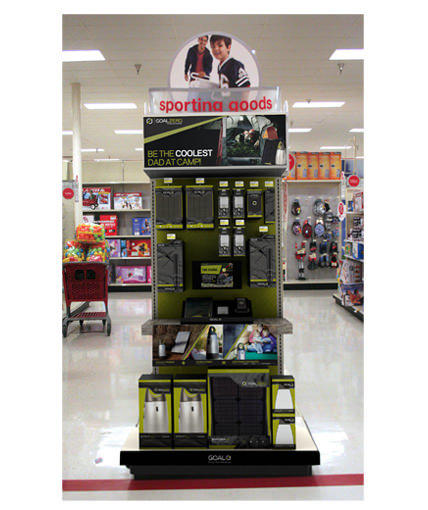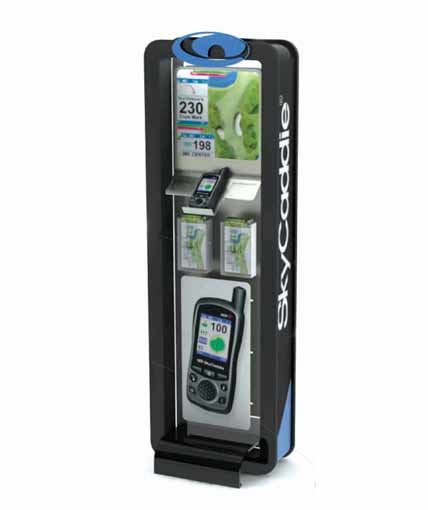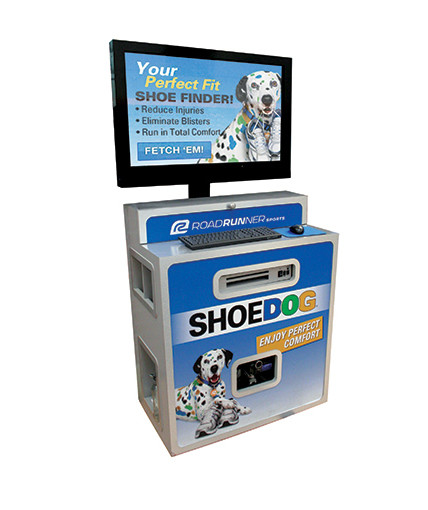
In our last 3 blogs we discussed 10 important aspects of designing an effective point-of-purchase display. In this blog, we’ll consider how incorporating videos selectively can be a key aspect of effective design.
Incorporate Videos Selectively
In the last few years there has been a clear trend toward digital signage and the use of videos in POP displays. Adding videos to your display can be a smart move if it is important to show your product in use, if your sale is highly educational, if your product is highly technical or if you believe video is the best way to engage a shopper. However, videos are not appropriate for all point of purchase displays, and in some cases the cost of adding a digital media player outweighs the benefits.
If you want to incorporate a video player into your POS video store display, there are a few things that are important to understand. First, make sure the production quality of the video is high, the messaging in your video is concise and on point, and the entertainment or educational value of your video is sufficient to captivate and convert potential buyers of your product. Your video needs to represent your company well while serving to enhance your brand image. Unprofessional or hastily produced videos can hurt your brand and are likely to be a waste of money.
Before making a decision to incorporate a video into your display, make sure you will have access to electrical power in the specific locations where your display will be placed within the chain of retail stores. AC powered digital media players tend to be somewhat less expensive than battery powered players, while also having the advantage of being able to play a continuous loop video without being limited by battery life. The downside is that store personnel may decide to turn off the sound on the video or even turn off the entire video player after a couple of weeks of exposure to continuous loop monotony.
If you have a lower-end POP video display and a limited budget, you might consider using a digital photo frame that plays video. The resolution is typically not as good as standard digital media players, but you may find the quality acceptable given your budget constraints. If you have the budget to invest in a standard LCD advertising player, make sure you specify a player with good resolution (ideally 800 x 480), the proper Aspect Ratio (ideally 16:9), a cord of at least 8 ft., one or preferably two high quality stereo speakers, a USB connection, a mute button, and a motion detection sensor if desired. Also, be sure to invest in a good SD card since the range of quality in SD cards on the market is highly variable.
If you want to incorporate a video player into your POS display but will not have access to electrical outlets in your designated retail location, you may want to opt for a battery-powered LCD media player. Prepare to spend a little more, but battery-powered digital media players can still be a viable option. If you are forced to go the battery-powered route, the first thing you need to do is make sure your video is not too long (ideally no more than 30 seconds or a maximum of 45 seconds). Generally battery packs are available in a variety of combinations, but 8, 12, and 24 D-Cell battery packs are the most common. A 24-count D-Cell battery brick has an estimated play time of over 26,000 30-second advertising spots.
For battery-powered LCD media players, customers often ask us if it is better to have the video activated through motion detection or through push button activation. Our answer is generally to go with push button activation since it tends to do a better job of preserving battery life, whereas in high traffic stores motion detection players are frequently activated by shoppers who are just passing by and may have no interest in your product. Some media players utilize motion detection to turn on the LCD screen and display a JPEG image as a way of signaling the shopper that the video is ready to play. That option is worth considering despite the incremental battery power consumption. At a minimum, we recommend including a flashing activation button which is a relatively inexpensive add-on that can help to capture shopper attention.



We have included a couple of examples of retail displays we have designed which incorporate digital media players.
Jim Hollen is the owner and President of RICH LTD. (www.richltd.com), a 35+ year-old California-based point-of-purchase display, retail store fixture, and merchandising solutions firm which has been named among the Top 50 U.S. POP display companies for 9 consecutive years. A former management consultant with McKinsey & Co. and graduate of Stanford Business School, Jim Hollen has served more than 3000 brands and retailers over more than 20 years and has authored nearly 500 blogs and e-Books on a wide range of topics related to POP displays, store fixtures, and retail merchandising.
Jim has been to China more than 50 times and has worked directly with more than 30 factories in Asia across a broad range of material categories, including metal, wood, acrylic, injection molded and vacuum formed plastic, corrugated, glass, LED lighting, digital media player, and more. Jim Hollen also oversees RICH LTD.’s domestic manufacturing operation and has experience manufacturing, sourcing, and importing from numerous Asian countries as well as Vietnam and Mexico.
His experience working with brands and retailers spans more than 25 industries such as food and beverage, apparel, consumer electronics, cosmetics/beauty, sporting goods, automotive, pet, gifts and souvenirs, toys, wine and spirits, home improvement, jewelry, eyewear, footwear, consumer products, mass market retail, specialty retail, convenience stores, and numerous other product/retailer categories.

